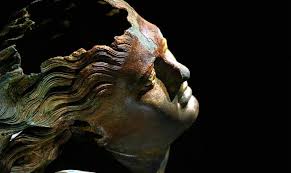Descrizione

The precious bronze statue, dating from the late fourth century BC and attributable to the school of the great artist, Praxiteles, is exhibited in the Museum of Sant'Egidio in Mazara del Vallo, located building of significant architectural interest: a deconsecrated church that was built between the beginning of 1500 and the end of the same century. Hosts the precious statue since 2005, when the end of the restoration, carried out by the Central Institute for Restoration in Rome, the Satyr returns to Mazara del Vallo. The bronze statue was found in two stages: in the spring of 1997 came to light the left leg and March 4, 1998 the body without the other leg and arms, both recovered from the fishing boat Mazara Capitan Ciccio, under the command of Francesco Adragna. It is assumed that the statue was part of a cargo of a ship wrecked between Sicily and Cape Bon in a period of widespread antiquarian trade in antiquity. The Satyr is caught in the moment of the ecstasy of orgiastic dance, rotated on his right leg holding the symbols of worship, in the left kantharos (chalice for wine) and the right barrel of the tyrus decorated with a ribbon and crowned with a pine cone, carrying on his shoulder a panther skin. The abandonment of the head, the flowing hair, the half-closed lips, the twisting of the torso suggest the delirium of the whirling dance, added to the excitement of drinking, in which the dancer would go into a trance, staring at the pine cone on the tyrus and spinning around himself until he lost his senses.\The Museum of the Satyr, in addition to Praxiteles' masterpiece, exhibits finds from the waters of the Sicilian channel, including the bronze fragment of an elephant's foot from the Punic-Hellenistic period, a bronze cauldron from the medieval period, a selection of transport amphorae from the archaic, classical, Hellenistic, Punic, Roman and medieval periods. Also on display are two iron cannons from Torretta Granitola, from which some Corinthian and Ionic capitals are also on display.




 Top of the World
Top of the World

